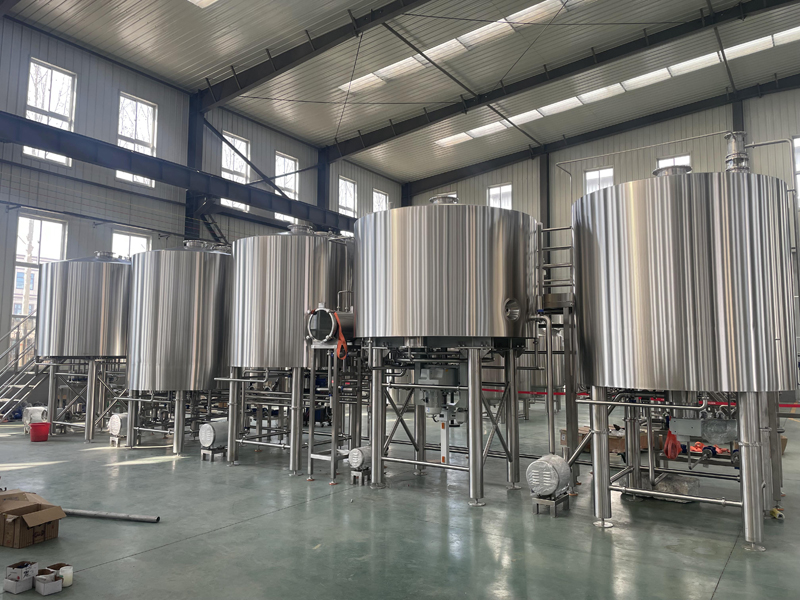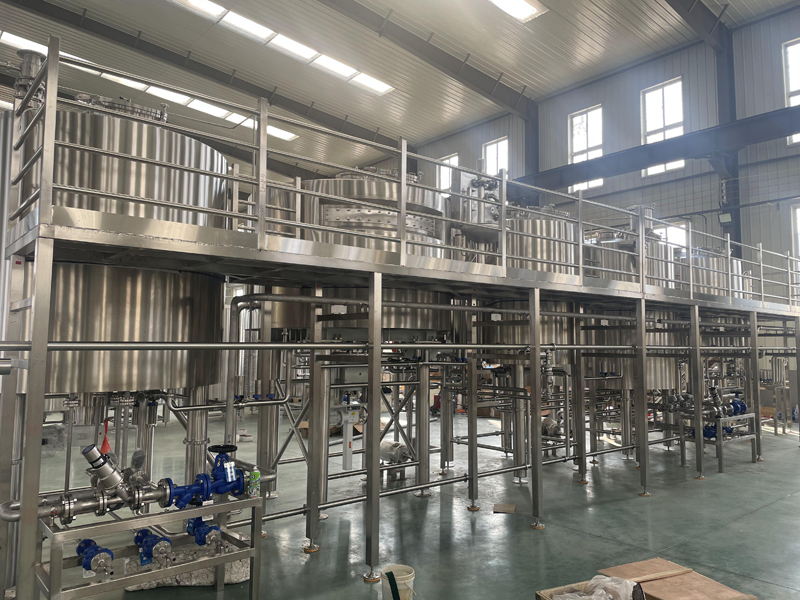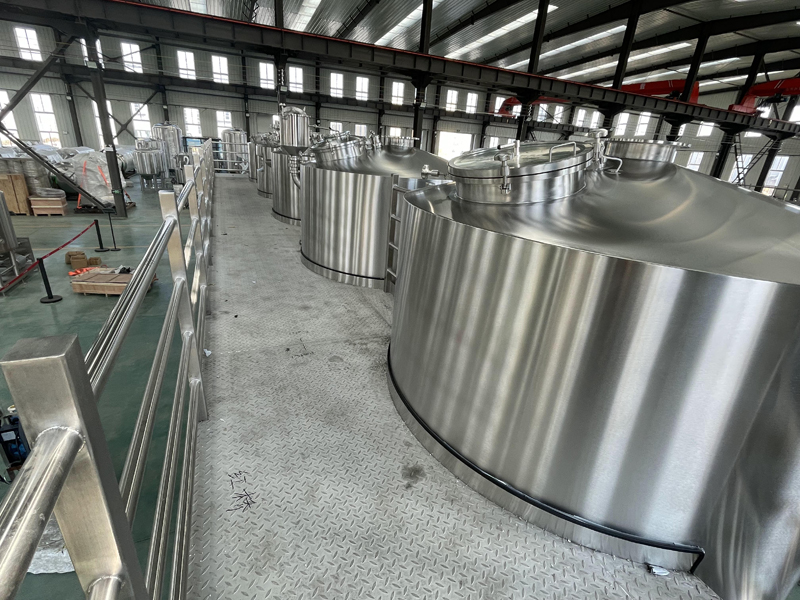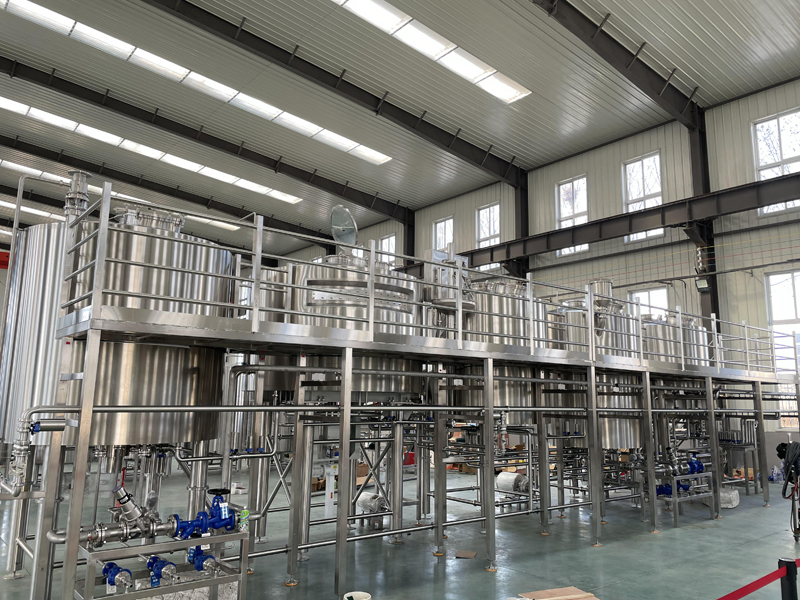I.What is a 5 vessel brewhouse?
A 5 vessel brewhouse refers to a specialized brewing system comprising five distinct vessels or tanks. Each of these vessels serves a specific purpose in the brewing process, ensuring a smooth and efficient production of beer.

Besides the brewhouse is suggested to be a five vessel configuration, we hope to have less brewing time, to improve the brewing efficiency. This should be also a good guarantee for the future when it is time for the next expansion by adding more and bigger cellar tanks. Here comes the new configuration of mash tun+lauter tun+buffer tank+kettle+whirlpool tank.
These five vessels ensure that each step of the brewing process is distinct and efficient. While smaller brewing systems might combine some of these steps into fewer vessels, a 5 vessel brewhouse allows for greater precision and larger batches of beer.
II. Choosing the Right Brewhouse for Your Budget:
If you’re considering investing in a 5 vessel brewhouse, it’s crucial to identify your production needs and budget constraints. For startups or smaller breweries, a 5 BBL or 10 BBL system might be sufficient. However, larger operations or those looking to scale up might need to consider capacities of 25 BBL or more.
Additionally, while it might be tempting to opt for cheaper alternatives, remember that a brewhouse is a long-term investment. It’s crucial to prioritize quality, durability, and after-sales support.

III. Functions of a 5 vessel brewhouse
A 5 vessel brewhouse is an advanced brewing system designed to optimize and streamline the brewing process. Each of the five vessels has a specific function:
Mashing: The Mash Tun initiates the brewing process. Grains are mixed with water in this vessel, where the heat activates enzymes in the malt. These enzymes then convert the grain’s starches into fermentable sugars, which will later be used by the yeast to produce alcohol.
Lautering: After mashing, the liquid is transferred to the Lauter Tun. Here, the liquid wort is separated from the grain husks. This separation is facilitated by a slotted plate at the bottom of the vessel, filtering out the solids.
Buffer tank: After lautering, filtered wort can be transfer to buffer tank, and lauter tank can be empty and re-get mashing liquid for next brewing to improving the brewing efficiency.
Boiling: The separated wort is then boiled in the Wort Kettle. This step serves multiple purposes – it sterilizes the wort, halts enzymatic activity, and extracts flavors and bitterness from hops added during this phase.
Whirlpool: Post boiling, the wort contains solid residues, primarily from hops and proteins. The Whirlpool vessel is designed to remove these solids. The wort is rapidly rotated, causing the solids to gather in the vessel’s center, making them easier to remove. Before the wort can be fermented, it must be cooled to a temperature suitable for yeast. This is done in the Heat Exchanger, where the hot wort is passed through a series of cooled plates or tubes, bringing down its temperature.

V. How to choose a 5 vessel brewhouse?
Choosing the right 5 vessel brewhouse is a pivotal decision for breweries. The system you choose can impact your production capacity, product quality, and overall operational efficiency. Here are key considerations to guide your decision:
Determine Your Capacity Needs: Your brewhouse size should align with your production goals. Are you a small craft brewery or a large-scale commercial operation? While a 5 BBL system might be adequate for a local brewpub, a larger brewery might need capacities of 25 BBL or more.
Material Quality: Stainless steel is the gold standard for brewhouses due to its durability and resistance to corrosion. However, the quality and thickness of steel can vary. Always opt for food-grade stainless steel with adequate thickness for longevity.
Degree of Automation: Modern brewhouses come with varying levels of automation. While automated systems can increase efficiency and consistency, they also come with a steeper price tag. Evaluate if the investment in automation aligns with your budget and production needs.
Customization Options: Some manufacturers offer customization options, allowing breweries to tailor the system based on specific requirements. This can include additional features, unique vessel configurations, or even aesthetic modifications.
Energy Efficiency: Energy consumption can be a significant operational cost. Systems with energy-efficient designs, like heat recovery systems or advanced insulation, can lead to long-term savings.
Manufacturer Reputation: Always research the reputation of the manufacturer. Established brands with a history of quality products and good after-sales support are generally more reliable.

Post time: Mar-26-2024

